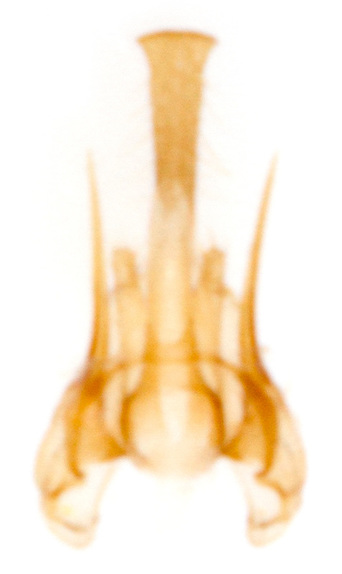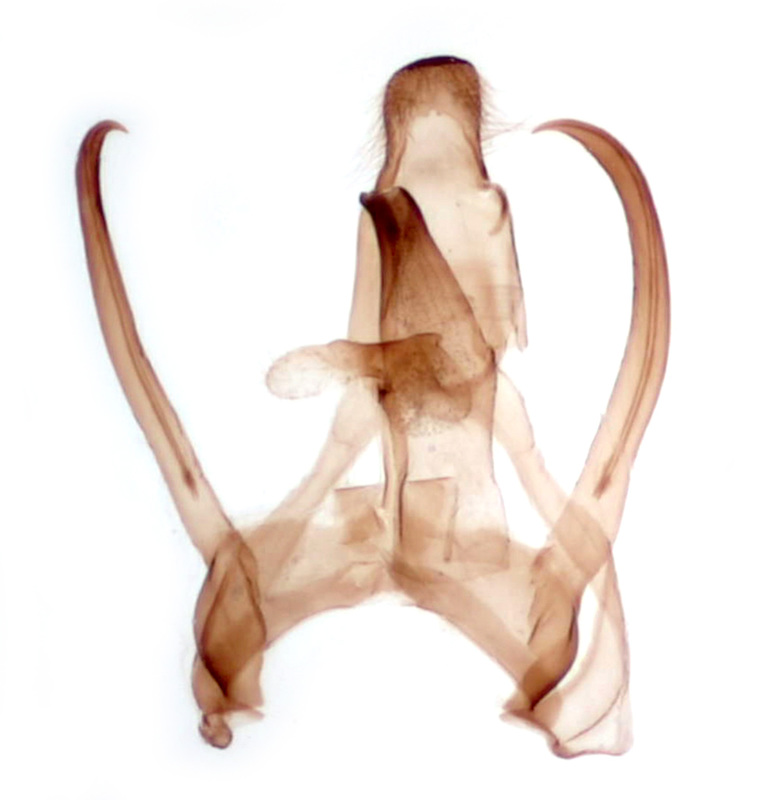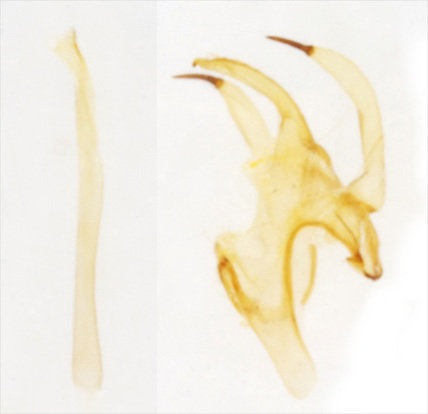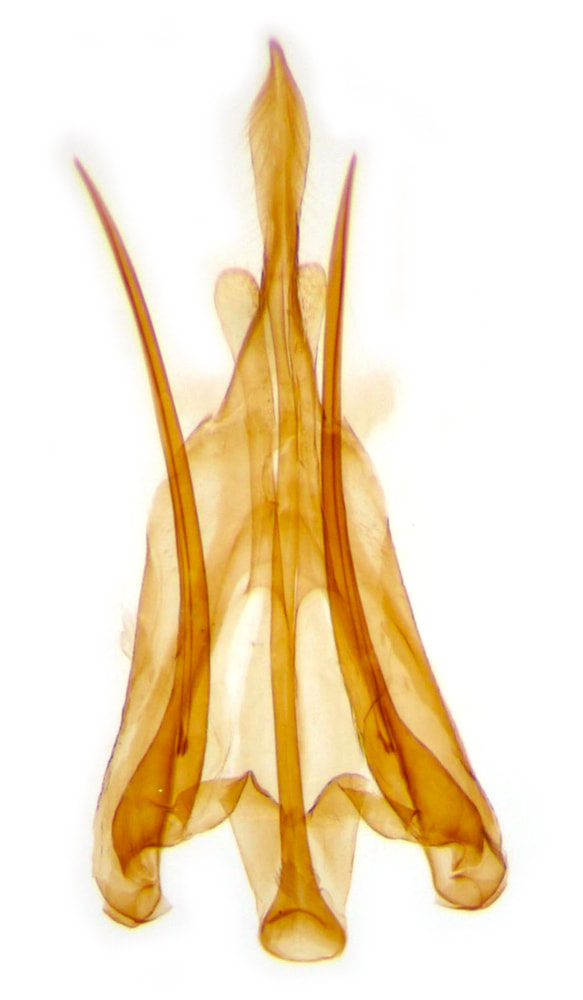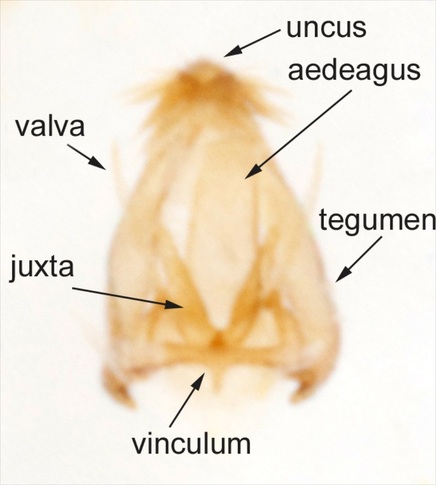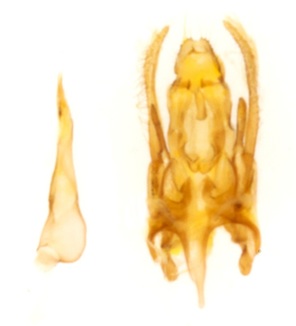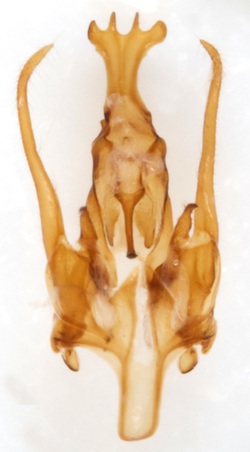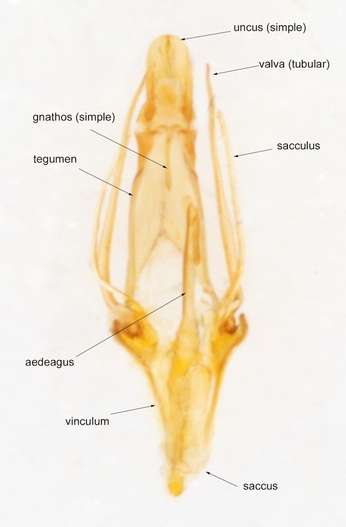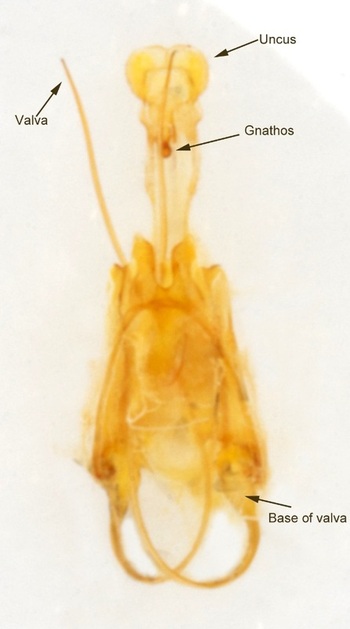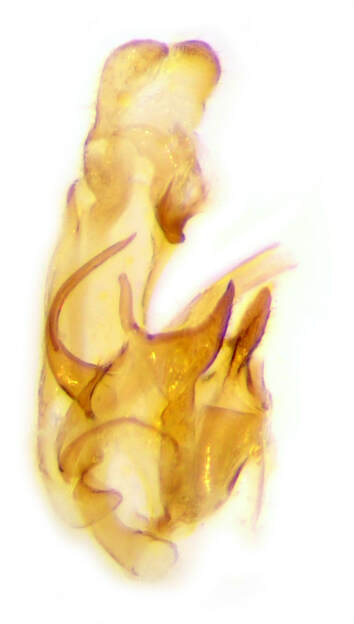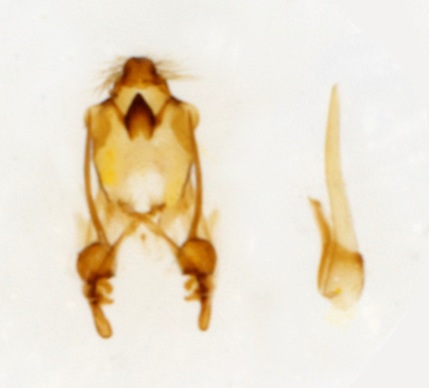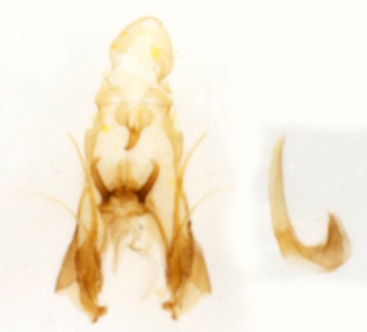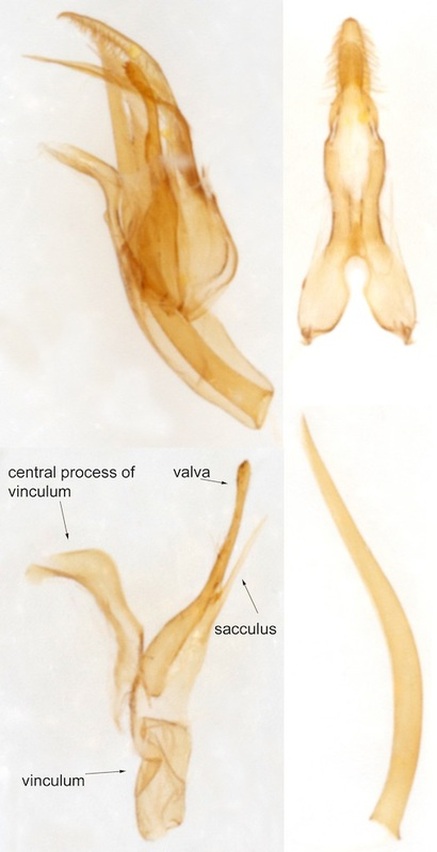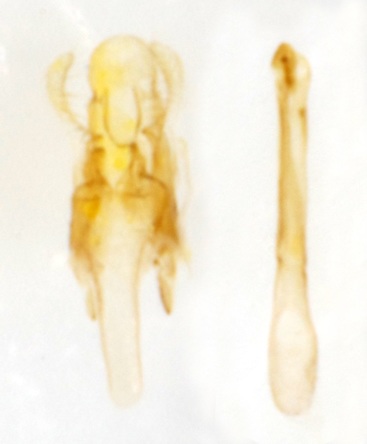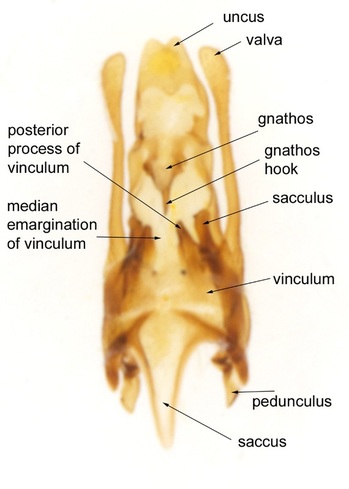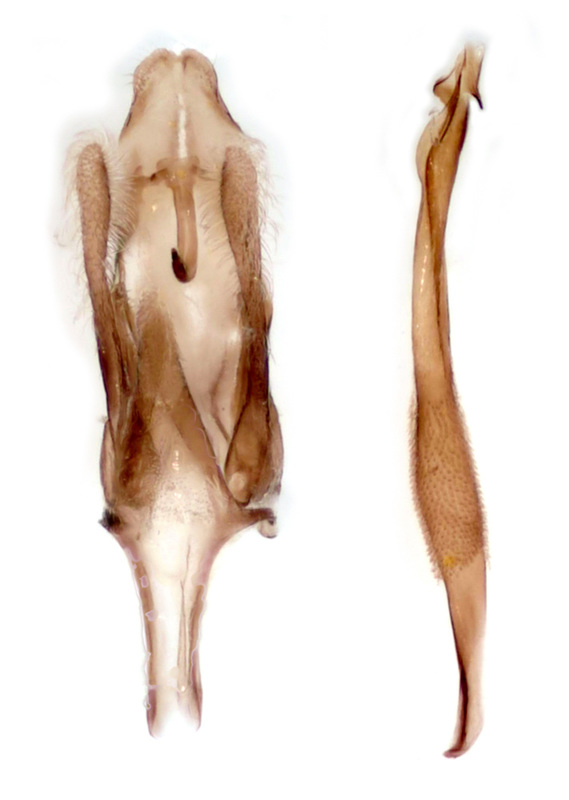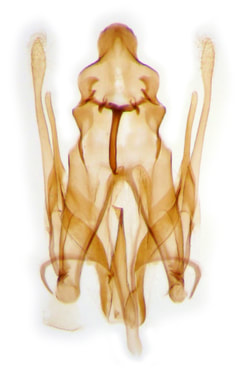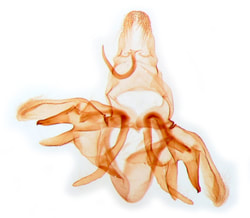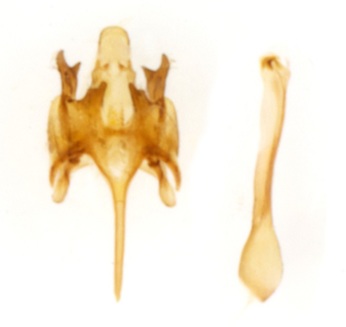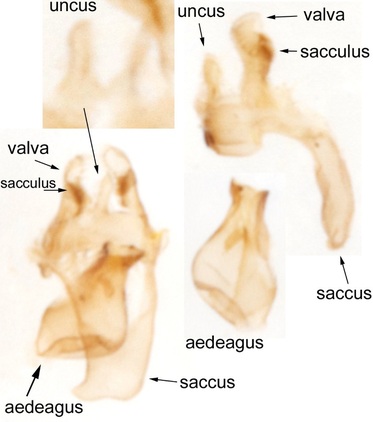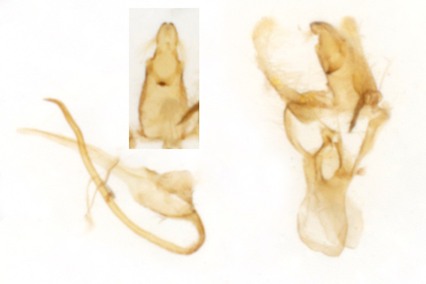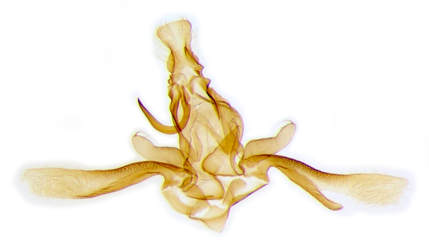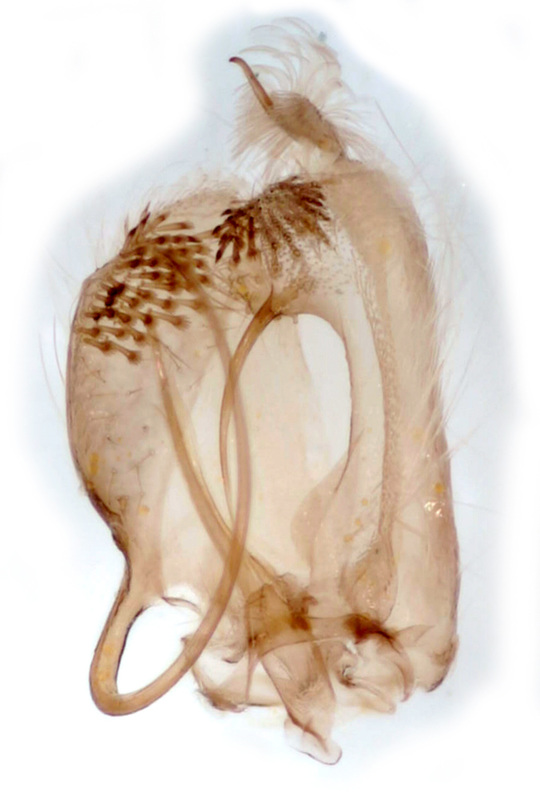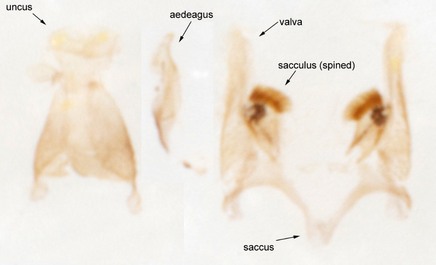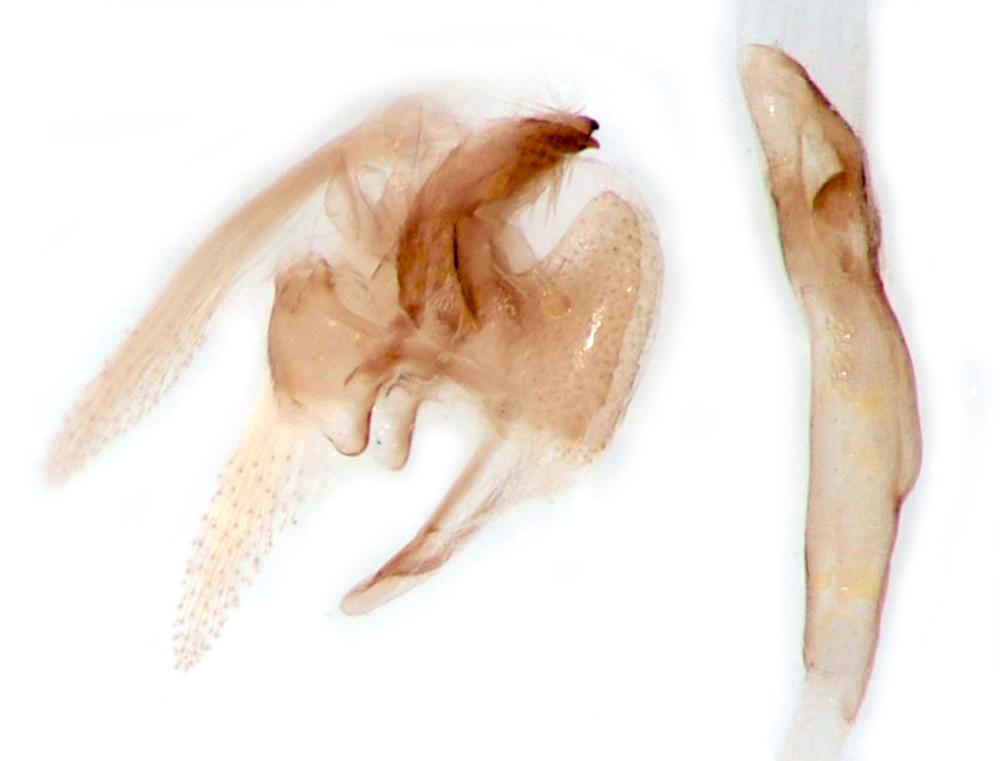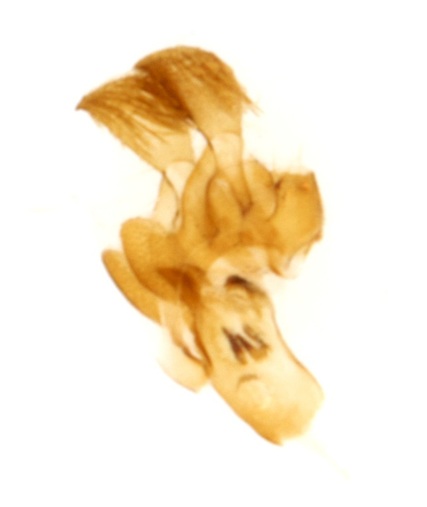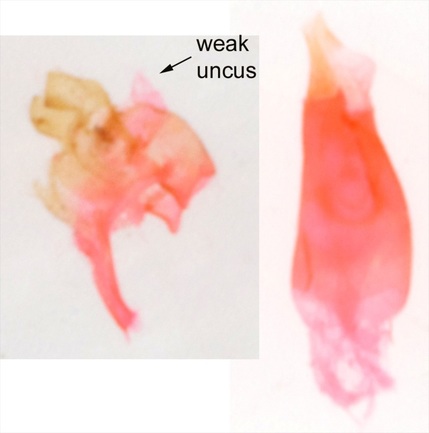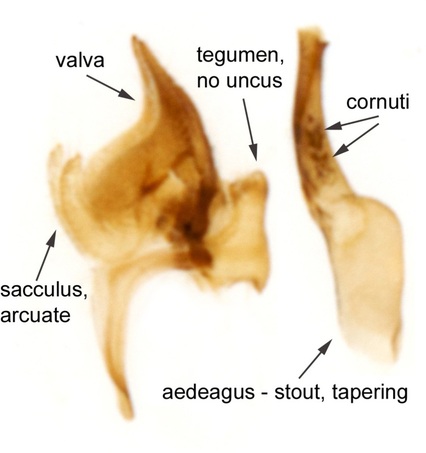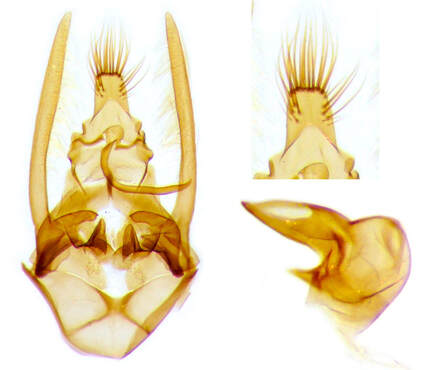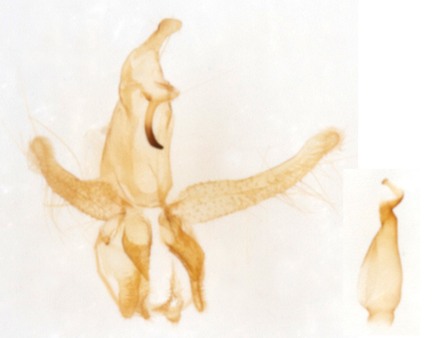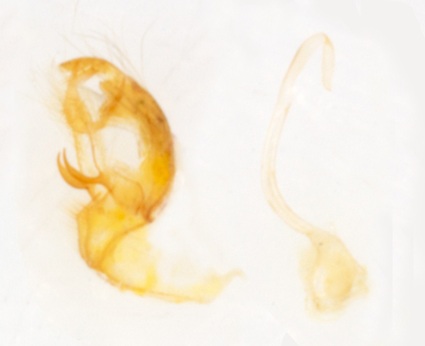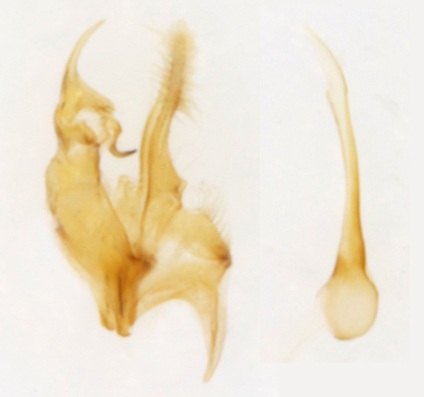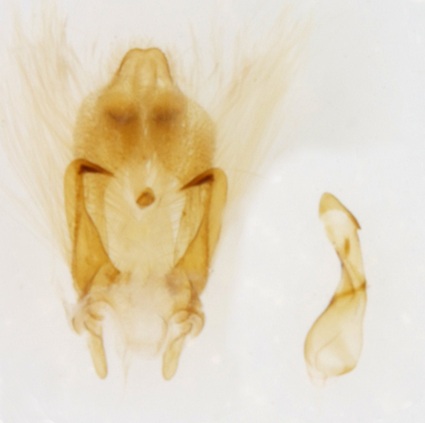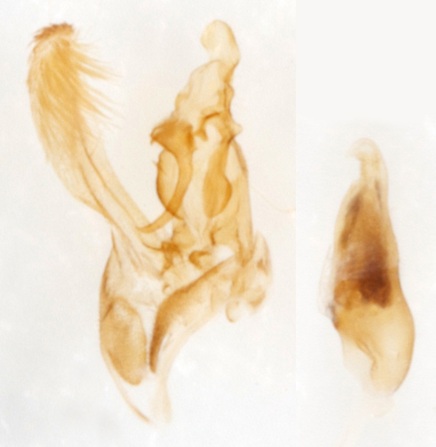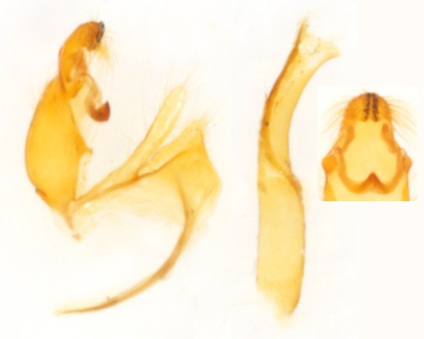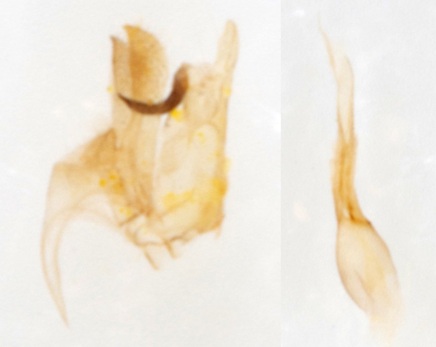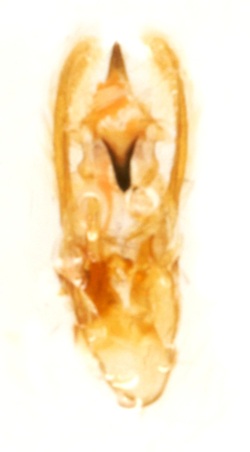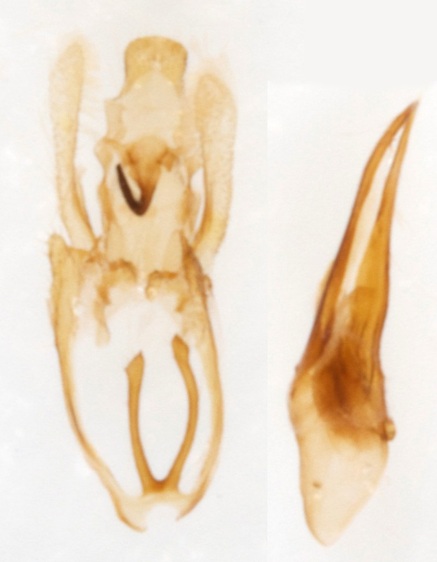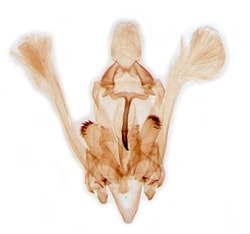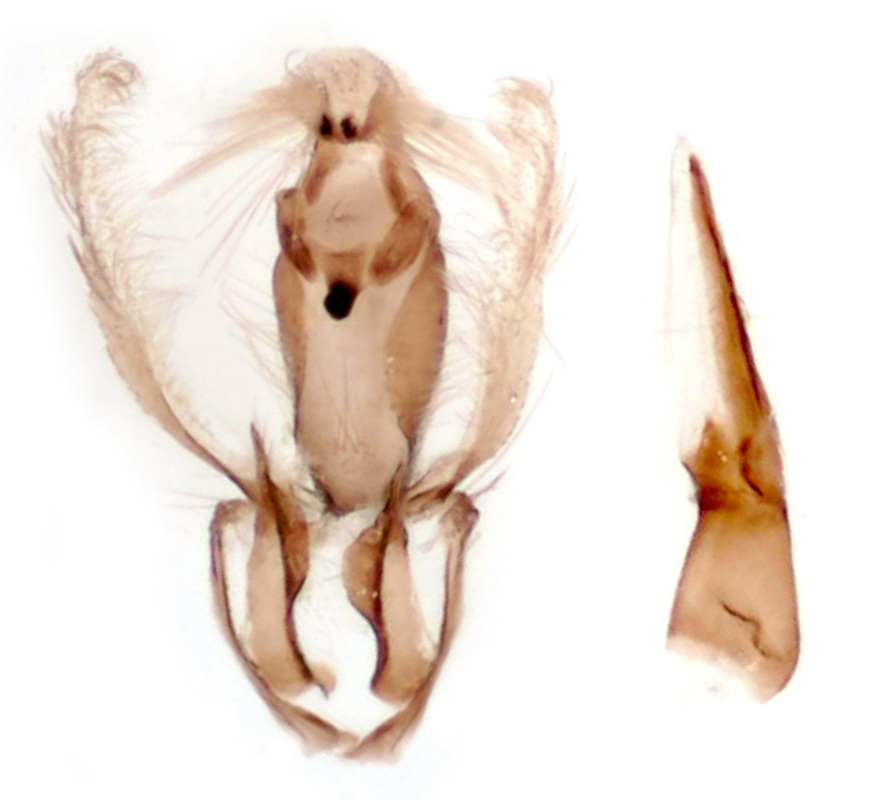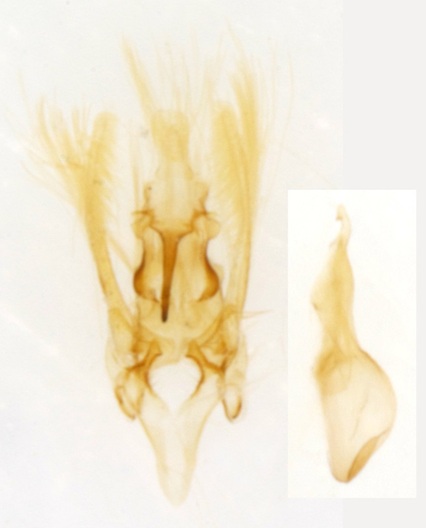GELECHIIDAE: Key to male genitaliaBased on key in MBGBI4.2
This key identifies male Gelechiids to genus. I had hoped it would provide some clue as to the justification for subfamily divisions, but it only does so to a limited extent. The presence of Sophronia in group A and Athrips in group B seems quite anomolous. |
Note 17/03/2021: This page has not been kept up to date and is due for revision. Sophronia has now been placed in subfamily Gelechiinae. My examinations of Athrips confirms that it does have separate dorsal and ventral plates (I have not yet examined Xystophora). So it seems that divided dorsal and ventral plates may well be the feature that assigns a Gelechiid to subfamily Gelechiinae and excludes all other subfamilies
A. Abdominal S8 divided into separate dorsal and ventral plates
(all the Gelechiinae except Athrips + Sophronia (Anacampsinae)
A1. Valvae asymmetrical > Coleotechnites
A2. Gnathos absent (or inconspicuous) > 6 genera
A3. Gnathos 2-lobed > Gelechia
A4. Ganthos simple > 17 genera
(all the Gelechiinae except Athrips + Sophronia (Anacampsinae)
A1. Valvae asymmetrical > Coleotechnites
A2. Gnathos absent (or inconspicuous) > 6 genera
A3. Gnathos 2-lobed > Gelechia
A4. Ganthos simple > 17 genera
A1. Valvae asymmetrical

Coleotechnites
Awaiting specimen
Awaiting specimen
A2. Gnathos absent (or inconspicuous)
The key in MBGBI4.2 is confusing for this group: Teleiodes sequax has a pointed uncus but is keyed in A2c. Some species
of Teleiodes possess a more conspicuous simple gnathos and key out in A4. Carpatolechia is included in both A2c and A2d but all the drawings show a pointed uncus, though that of C.fugitivella could be interpreted either way. Pseudotelphusa paripunctella has an elongate truncate apex but is keyed in A2d. It may be that the two Pseudotelphusa species can be keyed together on basis of digitate lobes on vinculum but not on juxta and Teleiodes keying with Carpatolechia in having digitate lobes on juxta but not on vinculum - these two genera then differing in the form of the uncus - but T.sequax is again anomolous. I will try to sort this out as suitable material becomes available.
A2a. Uncus deeply divided into 2 lobes > Altenia/Xenolechia
A2b Uncus elongate, broader at apex than base > Pseudotelphusa paripunctella
A2c. Uncus rounded or truncate > Teleiodes
A2d. Uncus pointed > Aroga/Pseudotelphusa scalella/Carpatolechia
The key in MBGBI4.2 is confusing for this group: Teleiodes sequax has a pointed uncus but is keyed in A2c. Some species
of Teleiodes possess a more conspicuous simple gnathos and key out in A4. Carpatolechia is included in both A2c and A2d but all the drawings show a pointed uncus, though that of C.fugitivella could be interpreted either way. Pseudotelphusa paripunctella has an elongate truncate apex but is keyed in A2d. It may be that the two Pseudotelphusa species can be keyed together on basis of digitate lobes on vinculum but not on juxta and Teleiodes keying with Carpatolechia in having digitate lobes on juxta but not on vinculum - these two genera then differing in the form of the uncus - but T.sequax is again anomolous. I will try to sort this out as suitable material becomes available.
A2a. Uncus deeply divided into 2 lobes > Altenia/Xenolechia
A2b Uncus elongate, broader at apex than base > Pseudotelphusa paripunctella
A2c. Uncus rounded or truncate > Teleiodes
A2d. Uncus pointed > Aroga/Pseudotelphusa scalella/Carpatolechia
A4. Gnathos simple
A4a. Uncus 4-lobed >Psoricoptera
A4b. Valvae tubular, tapering, without bristles > 5 genera
A4c. Valvae flat or tubular, with bristles > 12 genera
A4a. Uncus 4-lobed >Psoricoptera
A4b. Valvae tubular, tapering, without bristles > 5 genera
A4c. Valvae flat or tubular, with bristles > 12 genera
A4bii Uncus length = width, widest near apex
A4biii. Uncus length > width or widest near base
A4ci Posterior margin of vinculum with broad central process
B. Abdominal S8 forming a complete ring around genitalia
(all the Anomologinae, Chelariinae, Dichomeridinae and Pexicopiinae, Anacampsinae except Sophronia, and Athrips (Gelechiinae))
B1. Uncus 2-lobed > 4 genera
B2. Valvae asymmetrical > 2 genera
B3. Gnathos absent or inconspicuous > 7 genera
B4. Valva with sharp median tooth on ventral side > Xystophora
B5. Uncus with dense brush of erect setae > Athrips
B6. Apex of aedeagus reflexed or with spiral process or flagellum > 3 genera
B7. Apex of aedeagus simple or with small hook or cornutus > 11 genera
(all the Anomologinae, Chelariinae, Dichomeridinae and Pexicopiinae, Anacampsinae except Sophronia, and Athrips (Gelechiinae))
B1. Uncus 2-lobed > 4 genera
B2. Valvae asymmetrical > 2 genera
B3. Gnathos absent or inconspicuous > 7 genera
B4. Valva with sharp median tooth on ventral side > Xystophora
B5. Uncus with dense brush of erect setae > Athrips
B6. Apex of aedeagus reflexed or with spiral process or flagellum > 3 genera
B7. Apex of aedeagus simple or with small hook or cornutus > 11 genera
B3a. Uncus distinct > 2 genera
B3b. Uncus absent or weakly developed > 6 genera
B3b. Uncus absent or weakly developed > 6 genera
B3b1. Aedeagus not bulbed
B3b2. Aedeagus bulbed
Page published 03/11/2011 | Exoteletia added 12/12/2011 | Carpatolechia added 27/06/2012 | Ptochuusia added 18/07/2013 | Acompsia added 05/12/2013 | Dichomeris added 06/12/2013
